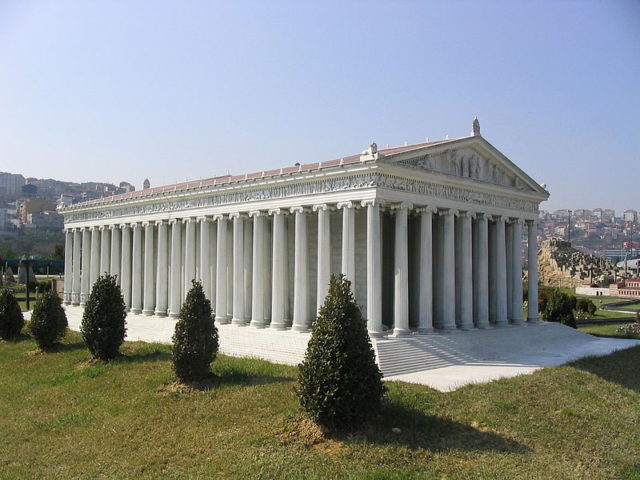Back in the 4th century BC, there was a Greek arsonist by the name of Herostratus. Much of his story is unknown, but it is thought that he was a slave or someone of low standing.
He targeted the Temple of Artemis at Ephesus by setting it alight. A fire broke out in the second temple, a replacement for the temple that had once stood there but had been destroyed by a flood in the 7th century BC. The new temple was made mainly of marble and was 180 feet wide and 337 feet long; it had pillars that were 40 feet tall, and a roof that opened to the sky. The temple was one of the Seven Wonders of the Ancient World and, understandably, people were not pleased to see it destroyed. They were able to hunt down and capture the person responsible.

Herostratus was tortured on the rack, and he confessed to having destroyed the temple by arson so that his name would live on and be immortalized forever.
Not only did the Ephesian officials execute Herostratus, but they also attempted to make sure he would be forgotten forever. They declared his name would not be mentioned ever again, under penalty of death. His name was also stricken from all official records; this act is called “damnatio memoriae” and it meant that all traces of him were to be removed from existence. As you can imagine, that didn’t work very well. His name appeared in documents written by Theopompus and again surfaced later in the writings of Strabo.

The temple was rebuilt a third time in 323 BC and was more ornate and larger than the previous two. This temple was also included in the list as one of the Seven Wonders of the Ancient World.
Read another story from us: The story of Theodore Roosevelt and the New York Police Department
The name of Herostratus lives on in both modern language and classical literature. Today, it refers to someone who commits a criminal act for notoriety.Having herostratic fame means having gained fame at any cost, which, in this age of recordings and live streaming, is becoming a very common event. In modern society, there are many examples of those seeking herostratic fame. Mark David Chapman, the shooter of John Lennon, said, “The result would be that I would be famous”. Other examples include the hosts of terrorist organizations that commit crimes to gain worldwide attention. There are too many examples big and small to share them all here but, like the Ephesian officials, we may be best off not allowing these people the fame they seek.
